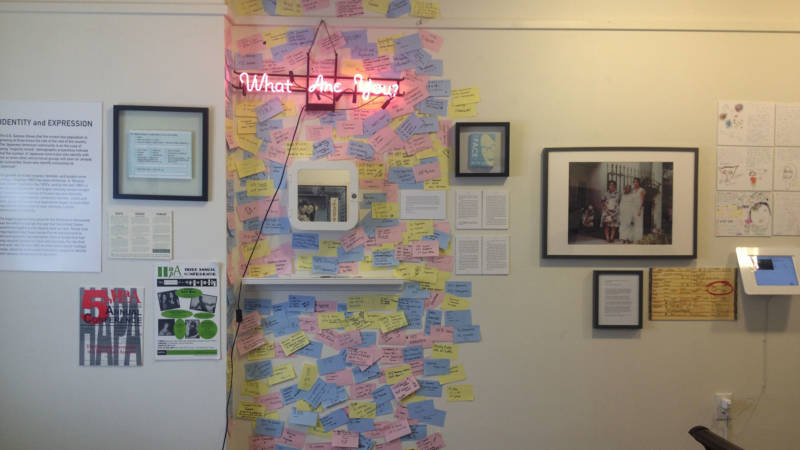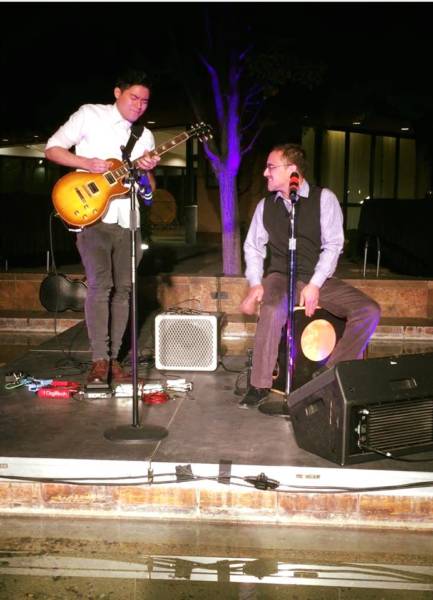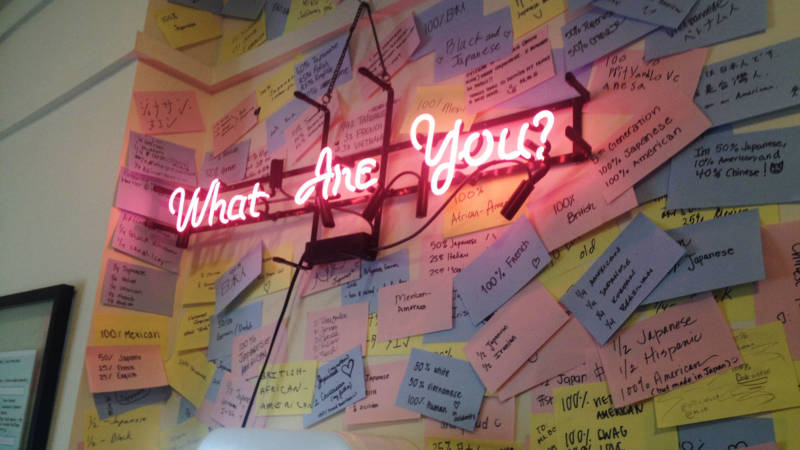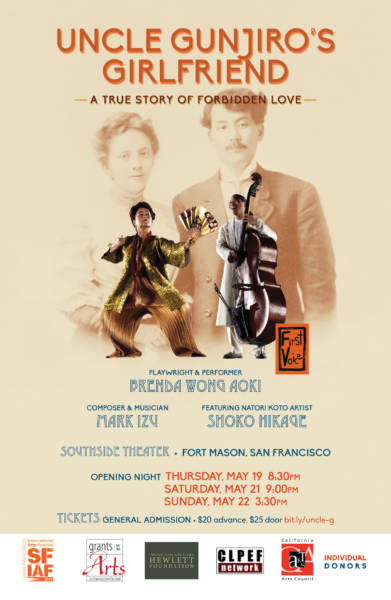Walk to one corner of the Japanese American Museum of San Jose’s newest exhibit and you’ll find yourself face to face with a wall of Post-its. The Post-its are medium sized, in pastel pinks, blues and yellows, with various answers scribbled onto them in black ink: “1/2 Japanese, 1/4 Dutch, 1/4 Lithuanian.” “Xicana, Nikkei, 100% me.” “Part Filipino, Part Salvadorian, All Mixed Queer.”
In the middle of the collage is a small square mirror, set below pink neon lights that spell out the question prompting all that surrounds: “What Are You?”

The installation, inspired by Ruth Ozeki’s exercise in introspective (and literal) reflection, is part of the show Visible and Invisible: A Hapa and Japanese American History. The exhibit explores the hapa (mixed-race Asian or Pacific Islander) community’s place in history, from their arrival as farm laborers to their service in World War II to their visibility in mainstream pop culture throughout the years.
“We wanted to both dispel the idea that mixed race is a new phenomenon in the Japanese American community, and the corollary belief that it means the demise of the community and identity,” sociologist and co-curator Cindy Nakashima says of the exhibit.

Aside from providing historical context to the community, the show also engages with the idea of individuals discovering their true self — a search that’s truly universal, but all the more pressing for multiracial people living in an increasingly racialized world.



